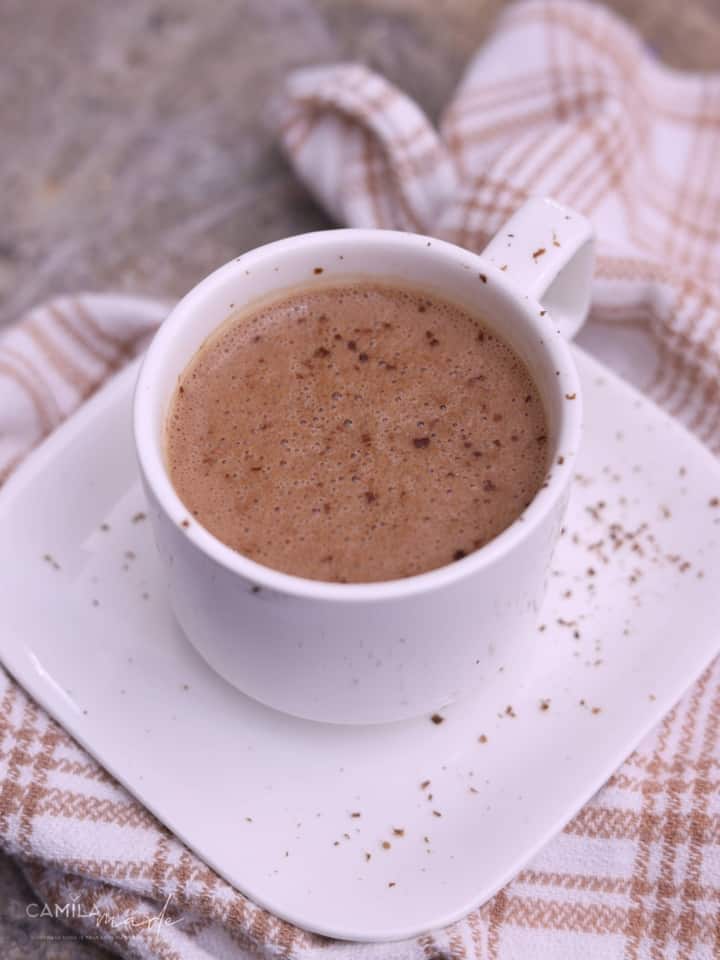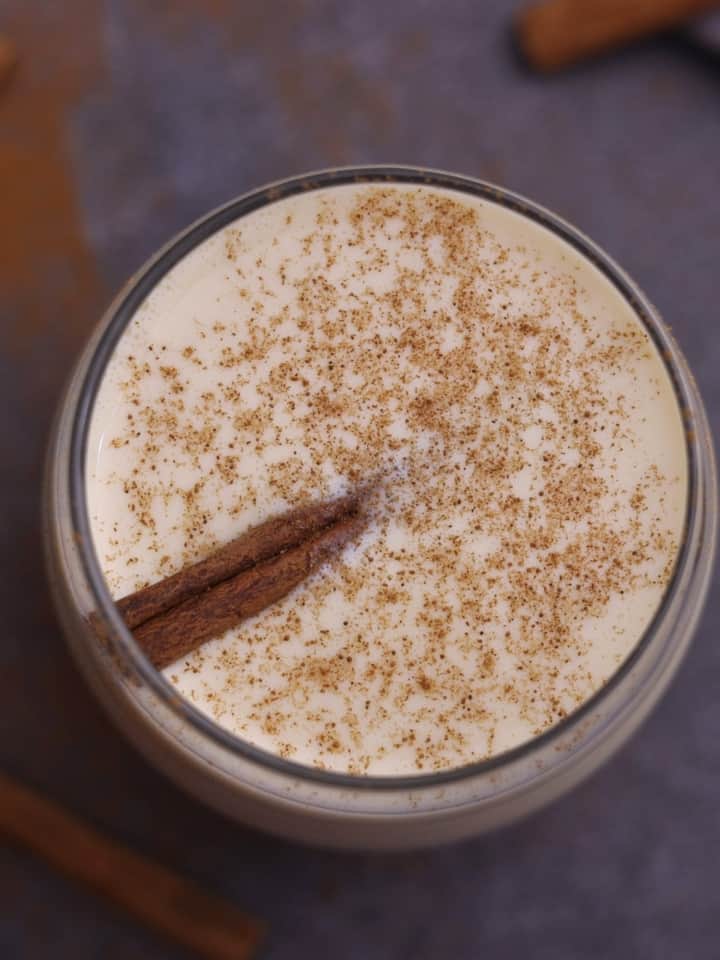Mate is a cherished beverage renowned for its unique preparation and invigorating properties. Requiring minimal ingredients but specific equipment, this recipe shows you how to make Mate using dried yerba mate leaves.
It is traditionally served in a gourd and sipped through a metal straw known as a bombilla. Perfect for any time of the day, Mate not only offers a caffeine kick but also has endless ways to customize it!
How to Make Mate
Note: The full instructions are provided in the recipe card below.
Pour the yerba inside the gourd until it is ¾ full. Cover the mouth of the mate gourd with one hand, invert it, and shake it vigorously for about 4 seconds.
This aims to get the smallest particles to sit on the top of the brewing. Now place the gourd again in its position, taking care of the brewing to remain inclined on one side.
Heat water in a kettle to a simmer, not a boil (It should be no more than 160° to 175° F); transfer it to a thermo.
Pour cold water into the gap you've made inside the gourd. Keep the gourd tilted until the Yerba has absorbed the water. Cover the mouth of the bombilla with your thumb and put the filter end into the hollow part of the brewing.
Uncover the bombilla only when you have found the definite position of the bombilla touching the bottom of the gourd. This way, you will keep the filter from blocking fine particles. Then, begin pouring the hot water softly inside the gourd.
How to Prepare Mate
Fill a cured gourd just over half full with yerba. Tilt the gourd until the tea covers the side and almost reaches the top. Before putting the straw in, pour cold water into the gap you've made inside the gourd.
Keep the gourd tilted until the Yerba has absorbed the water. Put the filtered end of the mate straw into the tea at an angle. Pour hot (not boiling) water into the yerba mate tea and drink. A temperature of 160° to 175° Fahrenheit is best.
Related Recipes:
- Terere
- Mate Cocido Quemado
- Authentic Paraguayan Reviro
- Atole de Maizena
- Atole de Avena | Oatmeal Drink
- Cafe Cremoso
📖 Recipe
Easy Paraguayan Mate
Ingredients
- Dried herbs , katuava, boldo, chamomile, ginseng, mint, lemon verbena, etc.
- Water , hot (160° to 175° F)
- Yerba Mate
Instructions
- Pour the yerba inside the gourd until it is ¾ full. Cover the mouth of the mate gourd with one hand, invert it and shake it vigorously for about 4 seconds. The purpose of this is to get the smallest particles to sit on the top of the brewing.
- Now place the gourd again in its position, taking care of the brewing to remain inclined on one side. Heat water in a kettle to a simmer, not a boil (It should be no more than 160° to 175° F degrees F); transfer it to a thermo.
- Cover the mouth of the bombilla with your thumb and put the filter end into the hollow part of the brewing. Pour a little cold water into the gap you've made inside the gourd. Keep the gourd tilted until the Yerba has absorbed the water.
- Uncover the bombilla only when you have found the definite position of the bombilla touching the bottom of the gourd. This way, you will keep the filter from blocking with fine particles. Then, begin pouring the hot water softly inside the gourd. Hmm!!
- Fill a cured gourd just over half full with yerba. Tilt the gourd until the tea covers the side and almost reaches the top. Before putting the straw in, pour a little cold water into the gap you've made inside the gourd.
- Keep the gourd tilted until the Yerba Mate has absorbed the water. Put the filtered end of the mate straw into the tea at an angle. Pour hot (not boiling) water into the yerba mate tea and drink. A temperature of 160° to 175° Fahrenheit is best.
Notes
All nutritional information is based on third-party calculations and is only an estimate. Each recipe and nutritional value will vary depending on the brands you use, measuring methods, and portion sizes per household.



